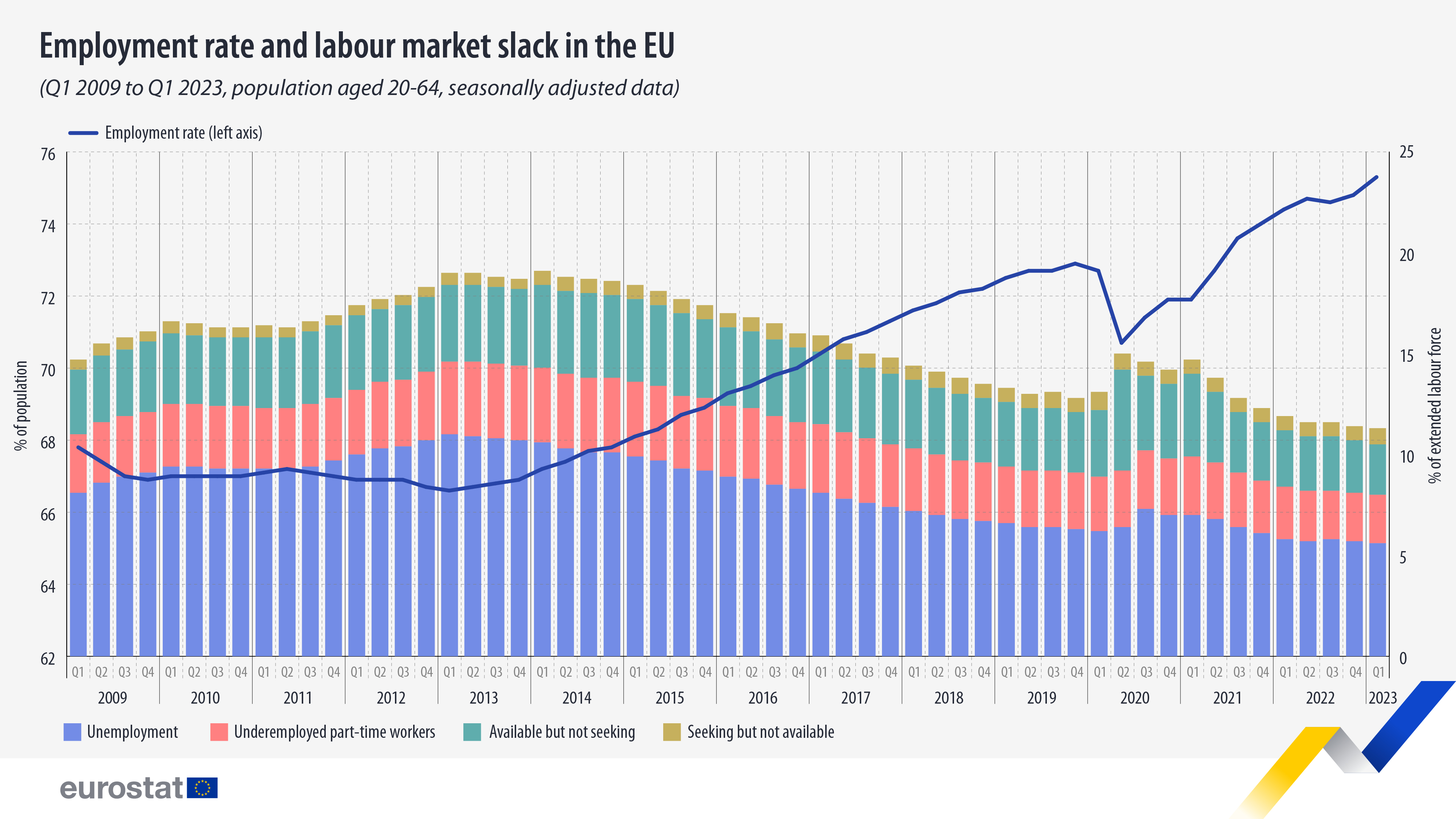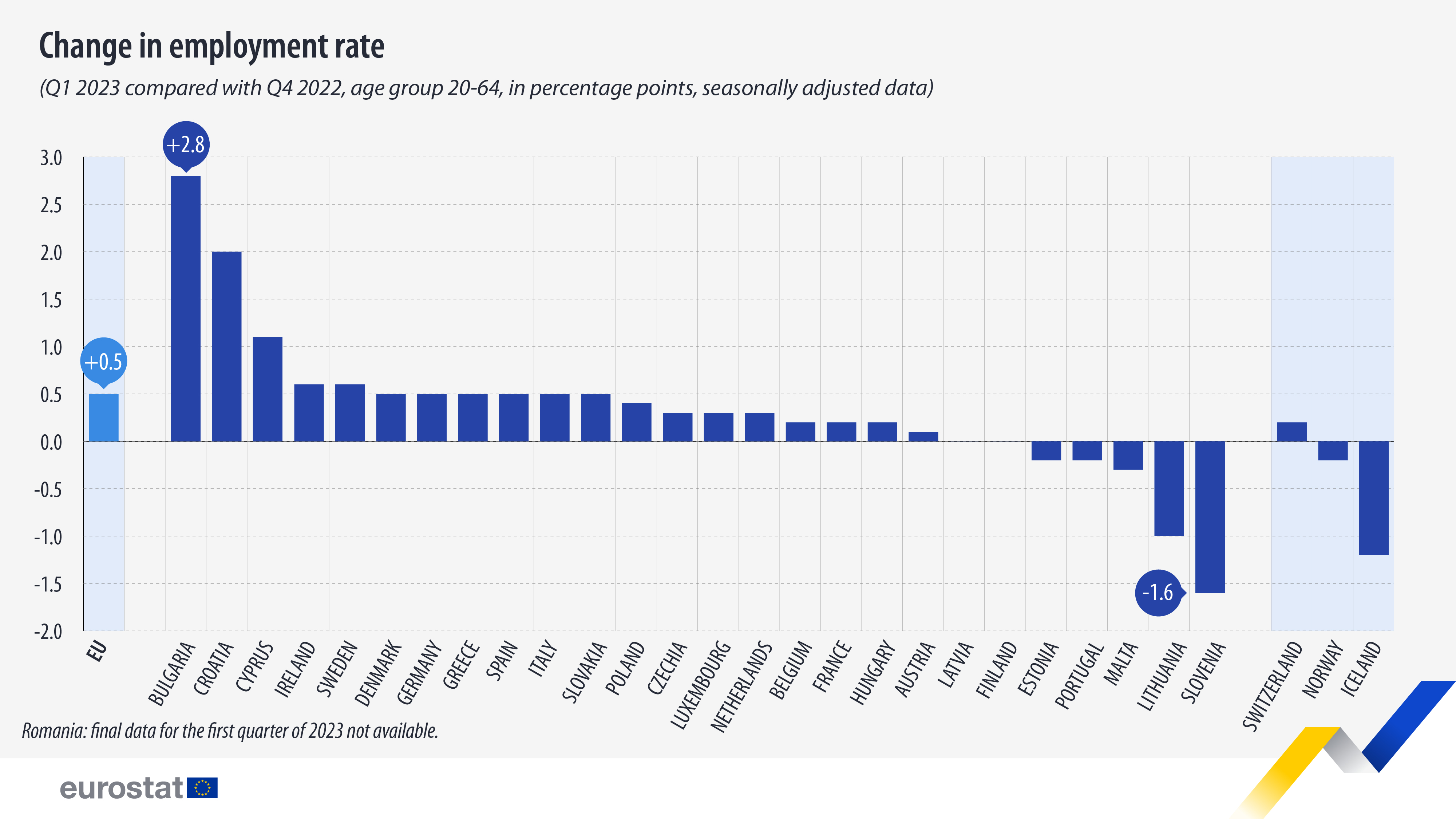June 19, 2023
In the EU, the employment rate of people aged 20-64 stood at 75.3% in the first quarter of 2023 (Q1 2023), an increase of 0.5 percentage points (pp) compared with the fourth quarter of 2022 (Q4 2022).
Labour market slack – encompassing those with unmet employment needs, a large part of which includes unemployed individuals – amounted to 11.3% of the extended labour force aged 20-64 in Q1 2023 (-0.1 pp compared with Q4 2022).
This information comes from data on the labour market in the first quarter of 2023 published today by Eurostat.
Changes in the employment rate between Q4 2022 and Q1 2023 varied across the EU countries for which data were available. The highest increases were recorded in Bulgaria (+2.8 pp), Croatia (+2.0 pp) and Cyprus (+1.1 pp).
While employment rose in 19 EU countries, it remained stable in Latvia and Finland and decreased in 5 EU countries, with the biggest decreases recorded in Slovenia (-1.6 pp), Lithuania (-1.0 pp) and Malta (-0.3 pp).
Source: Eurostat
Legal Notice: The information in this article is intended for information purposes only. It is not intended for professional information purposes specific to a person or an institution. Every institution has different requirements because of its own circumstances even though they bear a resemblance to each other. Consequently, it is your interest to consult on an expert before taking a decision based on information stated in this article and putting into practice. Neither Karen Audit nor related person or institutions are not responsible for any damages or losses that might occur in consequence of the use of the information in this article by private or formal, real or legal person and institutions.








